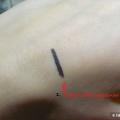What can you eat after giving birth? Permitted and prohibited foods, food rules
It seems that after giving birth, a woman can forget about various prohibitions, however, the nutrition of a nursing mother is still characterized by a large number of restrictions. Firstly, the mother's diet directly affects the volume and composition of milk, and, therefore, the well-being and health of the child.
Secondly, the diet in the early days will depend on how the delivery took place - natural or by cesarean section. That is why you should understand in more detail what you can eat after childbirth, and what products are strictly prohibited for a nursing woman.
So that the woman's condition after a difficult birth process does not worsen, and the development of the newborn proceeds without problems, at the end of the third trimester it is necessary to find out what is allowed to drink and eat immediately after returning to the ward.
Mom's daily diet needs to be made deliberately, making sure that the food is varied, but at the same time as gentle and safe as possible.
However, if you look at the list of prohibited foods, it may seem that on the first day a woman should not eat anything from ordinary food at all. It is not surprising that many mothers are perplexed about where the beneficial substances for the child and the strength for caring for him come from.
So, a few words about why there are nutritional restrictions for women in labor:
- Despite the absence of an umbilical cord, the child's body is closely connected with a woman, receiving milk from a nursing mother. In the first days, lactation is adjusted, therefore the composition of the most important product for a newborn child depends on the quality and nutritional value of the products.
- A properly composed diet is also needed in order to prevent the development of allergies and all kinds of difficulties with digestion in a child. That is why doctors prohibit the use of highly allergenic foods, especially in the first week after childbirth.
- In addition to the child, the mother needs to think about herself. Delivery is not always smooth, sometimes ruptures occur. In this position, pushing is strictly contraindicated. In order to prevent problems with bowel movement, doctors select a special menu that suits a particular woman.
In addition, the diet after a vaginal delivery will differ slightly from the diet after a caesarean section. The obstetrician knows all these nuances, however, a nursing mother should get to know them better.
The lactation process improves approximately 3-5 days after delivery. In order for a healthy product to arrive as expected, a woman should eat right. GV experts advise nursing mothers to eat fractionally - five to six times a day, in small portions.
 Milk will be of high quality, enriched with vitamins and minerals, if the mother adheres to several important principles of nutrition. Among them:
Milk will be of high quality, enriched with vitamins and minerals, if the mother adheres to several important principles of nutrition. Among them:
- harmlessness;
- diversity;
- optimal order of fluid intake.
These principles will help to "bring" breast milk to meet all standards and requirements.
- Product safety
The food that a nursing woman eats must be safe - it is necessary to exclude foods that are potentially dangerous to the baby.
First of all, they refuse from hyperallergenic substances or those that enhance fermentation in the gastrointestinal tract. For example, under the strict prohibition of smoking and marinades.
- Diversity
The nutrition of a nursing mother on the first day after delivery and in the following weeks is diverse. The list of permitted dishes when establishing lactation is usually given in the hospital, it includes low-fat meat and fish products, cottage cheese and cheese, "sour milk".
- Fluid consumption mode
The correct order of consumption of water and other beverages helps establish lactation. On the first day or two, women are advised to drink more liters of liquid per day.
By the third day, the volume decreases, since excess drinking during the breastfeeding period leads to excessive milk production, and this is fraught with chest pain and other unpleasant symptoms.
The diet in the first days after delivery is somewhat different from that of breastfeeding. If childbirth took place in a "regular" mode, the following dietary rules should be observed.
- If childbirth was normal, but difficult, replete with perineal tears, stitches, doctors advise on the first day to eat liquid dishes - porridge in water, light soups.
- It is better to give up the coarse fiber contained in baked goods, raw fruits. Groats (oatmeal, buckwheat, millet, corn) will help out, but you need to stay away from rice at least the first week, as it strengthens.
- In the early days of a nursing mother, forget about fatty, salty, fried food. Meat dishes are prepared only from lean veal or poultry.
- Sour milk is allowed, but it is important to adhere to the principle of rationality. While breastfeeding, a woman should drink low-fat kefir in small portions.
- It is forbidden to eat raw vegetables or fruits! Heat treatment of all dishes is a prerequisite for the diet of nursing mothers. It is important to observe such a regime for the entire first month.
- Eliminate allergic foods from your diet. When breastfeeding in the first days after childbirth, a woman should forget about chocolate, lemons, honey and dishes that contain chemical additives.
- Caffeinated drinks, including strong tea, are not needed for moms on the first day after their baby is born. We already talked about excess fluid above, it will not be allowed.

Taking into account the above rules, doctors make up a list of permitted products that women can use in the first week after the "average" birth. Mom is allowed to pamper herself:
- boiled veal or chicken meat;
- buckwheat or oatmeal boiled in water (it is allowed to put a little vegetable oil and a little salt);
- a slice of whole grain bread;
- hard cheese;
- a glass of low-fat kefir, cottage cheese without fruit and sweeteners;
- light soup in vegetable broth without aromatic spices;
- baked apple or banana;
- mineral water without gas, compote from dried fruits, broth (but without honey).
Perhaps such food will seem rather meager, but the mother will have to eat like this in the first week, then, with the normal course of the recovery period, other dishes shown to the nursing mother are added to the diet.
Of course, the menu is made taking into account the individual characteristics of a woman, the peculiarities of the generic process, the presence / absence of allergies to certain foods. But an approximate menu might look like this:
First day

On the first day, mom needs to drink more, about one and a half liters. It is allowed to use dried fruit compote, currant or cranberry juice, weakly brewed tea is possible.
Second day
The same dishes are prepared for the mother as on the first day. In addition, you can include in the diet no more than 100 grams of boiled lean veal.
Third day
On this day, milk is actively arriving, which is why the intake of drinks is limited - no more than a liter. By breastfeeding, a woman can quench her thirst with lemon juice. For this, a small slice is placed in the mouth. Drink water in small sips.
- Breakfast - oatmeal with a little butter.
- The second meal is boiled hake or pollock with pasta.
- Dinner - boiled vegetables or steamed vegetable stew. As an alternative - a mug of fermented baked milk.
If mom has difficulties with bowel movement, you can eat prunes or a decoction of this product with dried apricots.
Having a baby with surgery implies a more careful approach to nutrition in the first week after birth. This is necessary to give the mother's body time to recover. This is especially true for those women who underwent strip surgery. In this case, the intestines will begin to function in a few days.
To normalize the gastrointestinal tract on the first day, an enema is given to a woman in labor, but if the difficulties with emptying the intestines do not disappear, rectal suppositories are prescribed.
As soon as the digestive tract organs work normally, and the woman can go to the toilet without medical assistance, the postoperative food is changed to a diet for a nursing mother.

The first day after caesarean
Usually, a woman spends the first day in the surgical ward, leaving after anesthesia. That is why she especially does not want to eat, especially since all the necessary elements enter the female body through a dropper.
A caesarean woman is allowed to drink only water, in tiny sips. To bring down the thirst, lemon juice is squeezed into the mineral water without gas. This simple method allows you to consume less fluid.
Second day
The next day, with an obvious stabilization of the condition and in the absence of negative consequences, the woman is transferred to a regular ward.
 Eating in the first week resembles the diets recommended for other abdominal surgeries.
Eating in the first week resembles the diets recommended for other abdominal surgeries.
Since the gastrointestinal tract is functioning insufficiently, the dishes are introduced gradually, focusing on their calorie content and digestibility by the stomach.
At first, doctors add beef or chicken broth to the diet, and it must be boiled in third water (the boiled water is drained twice, and then allowed vegetables are added).
The maximum amount of one serving is half a glass. They eat the dish twice a day. Once approved by the midwife, you can add some meat soufflé to your diet.
It is also allowed to eat mashed potatoes, oatmeal or buckwheat porridge. From drinks, you can use compotes, rosehip broth, currant juice or weakly brewed tea.
Third day
These days, a woman is already returning to a normal state, so food becomes more varied, but you should forget about high-calorie meals.
Overeating is also prohibited, since the gastrointestinal tract cannot cope with excess food. You need to eat fractionally, in small portions.
In the first week, a similar diet is maintained - a mature mother is offered meat broth and vegetable soup, but you should avoid fruits that lead to gas formation and constipation. Kashki is also a good option for a Caesarean woman.
For a variety of diet, cutlets or meatballs are prepared in a double boiler, fish is boiled. You can enjoy low-fat cheeses, natural yogurt and a baked apple. It is only important to keep track of that the dishes are warm, not cold or hot.
Then the diet becomes the same as after a normal delivery. The most important thing is in the first week and further to consume foods that contribute to the better functioning of the gastrointestinal tract, for example, some dried fruits or compote, beets.
While breastfeeding, a pregnant woman must follow the same rules that are prescribed to other women in labor. Doctors, by the way, are sure that it is better to eat a slice of pickled cucumber than to suffer, looking at it.
However, you should still not eat those dishes that are included in the list of prohibited during breastfeeding:

A properly selected diet in the first week after childbirth adjusts the work of the mother's digestive organs, and also helps to strengthen children's immunity. While breastfeeding, a woman must follow all the doctor's recommendations in order to establish lactation and ensure the required amount of milk.
So, for a woman immediately after delivery, it is important to adhere to all nutritional rules. To do this, you need to know what you can eat and what products should be discarded. If you think that such prohibitions are too strict, remember, the first days will fly by very soon.
The baby will soon grow up, which means that it will be possible for the nursing mother to expand her diet. And now you need to eat healthy, balanced and complete. This is necessary for the woman and the child.
Hello, I am Nadezhda Plotnikova. Having successfully completed her studies at SUSU as a special psychologist, she devoted several years to working with children with developmental problems and consulting parents on raising children. I use the experience gained, including in the creation of articles of a psychological orientation. Of course, in no way do I pretend to be the ultimate truth, but I hope that my articles will help dear readers to deal with any difficulties.
 How to have the perfect date when you're not romantic
How to have the perfect date when you're not romantic What diseases do you need to drink coffee - benefits and effects
What diseases do you need to drink coffee - benefits and effects All my brown eyeliners
All my brown eyeliners